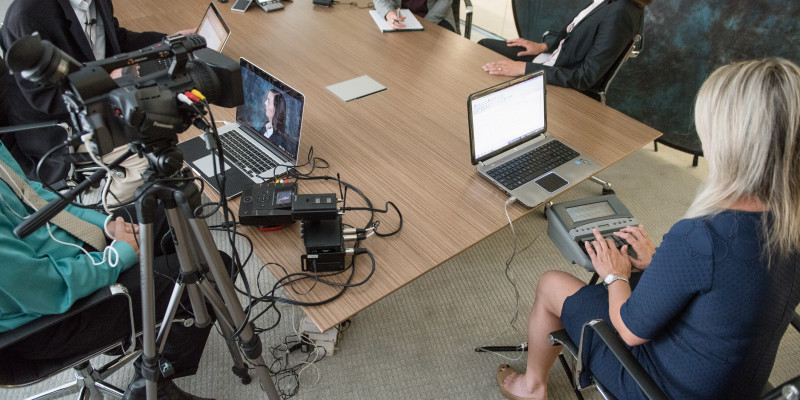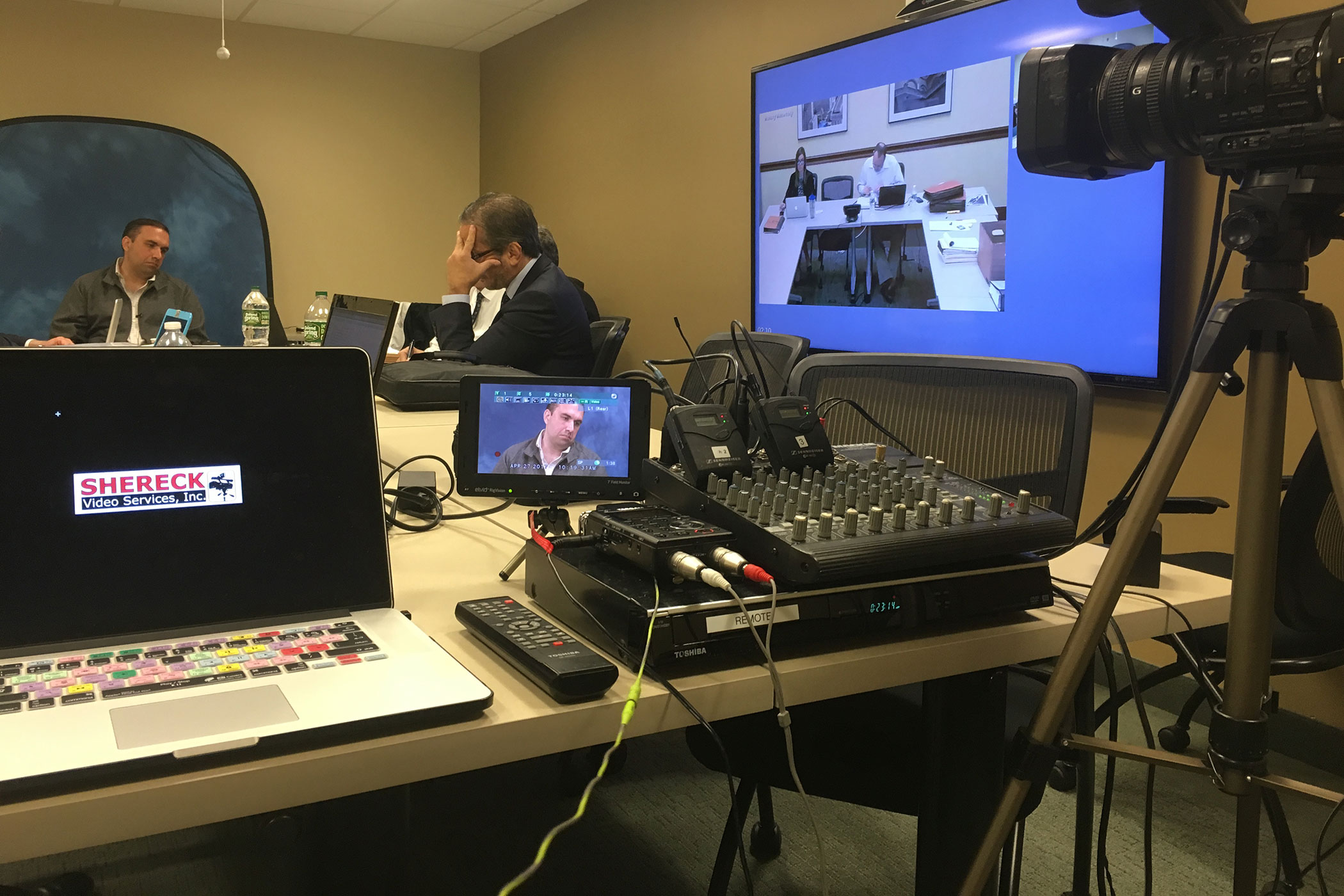Digging Into the Systems of Lawful Videography: Unveiling Its Procedure in Shielding Genuine Aesthetic Statement for Judicial Procedures
In the world of judicial process, the duty of legal videography stands as a keystone in protecting and providing visual evidence. As technology proceeds to advance, the systems behind lawful videography have come to be progressively intricate, supplying a critical layer of authenticity to statements recorded on video. By delving right into the operational details of legal videography, one can uncover the meticulous processes that protect the integrity of visual evidence presented in courtrooms - Legal Videography. This expedition not just clarifies the historical evolution of legal videography however also hints at the future trends that may additionally reinvent exactly how aesthetic statements are upheld in the realm of justice.
Historic Evolution of Legal Videography
Taking a look at the historic development of legal videography exposes a significant transformation in the recording and presentation of visual evidence within the legal landscape. In the past, legal procedures greatly counted on composed transcripts and pictures to record events and provide evidence. Nevertheless, with the advent of video clip modern technology, the lawful market saw a paradigm shift in exactly how visual statement was caught and presented.
The advancement of lawful videography can be mapped back to the late 20th century when advancements in video recording equipment made it more obtainable for use in courts. This technological advancement not only enhanced the precision and integrity of visual evidence yet also revolutionized the method situations existed to discretionary (Legal Videography). Lawyers began to recognize the persuasive power of video clip recordings in sharing feelings, nuances, and non-verbal signs that composed photos or transcripts alone could not capture successfully

Technology Innovations in Video Clip Documents
What essential technical developments have revolutionized video clip paperwork in the legal area? The lawful area has seen significant developments in video clip documents innovation that have enhanced the credibility and reliability of aesthetic evidence in judicial proceedings. Among the crucial developments is high-definition (HD) video clip recording capabilities, which offer crystal-clear images and sharp details that are crucial for properly catching testimonies, faces, and various other visual hints. In addition, the assimilation of timestamping and metadata functions in video clip documentation tools has actually enabled specific documents of when and where the video was tape-recorded, making certain the stability of the proof provided in court.
In addition, improvements in video clip security and watermarking technologies have bolstered the protection and tamper-proof nature of video evidence, securing it against unapproved changes or meddling. The introduction of cloud storage space solutions and remote access abilities has streamlined the storage space, retrieval, and sharing of video evidence, promoting smooth collaboration among lawful specialists and guaranteeing efficient accessibility to essential visual statements when required. These technological improvements in video clip documents have actually most certainly revolutionized the legal area, enhancing the precision, integrity, and admissibility of aesthetic proof in judicial process.
Role of Legal Videographers in Courtroom Setups
The evolution of video clip documentation technology in the legal area has demanded an important function for legal videographers in court settings, making sure the stability and dependability of visual testaments provided during judicial process. Lawful videographers play a basic duty in recording and protecting exact aesthetic evidence that can be essential in litigation. Their duty includes setting up equipment, videotaping procedures, and producing high-quality videos that precisely mirror the occasions in the court.
In court settings, lawful videographers have to abide by rigorous standards and standards to preserve the authenticity of the aesthetic record. They must have a keen eye for information and an extensive understanding of lawful procedures to make sure that the footage they record is a true representation of the occasions that took place. Additionally, lawful videographers typically work closely with lawful groups to ensure that the video proof lines up with the situation's demands and can be properly offered in court to sustain the lawful arguments being made. Overall, the function of legal videographers in court setups is essential in supporting the principles of justice and making sure the openness of lawful process.

Ensuring Admissibility and Integrity of Video Evidence
To keep the reputation of visual proof presented in legal procedures, guaranteeing the admissibility and integrity of video evidence is a vital duty for lawful videographers. Admissibility describes the acceptance of proof by the court, and for video evidence to be admissible, it has to satisfy particular criteria. Lawful videographers play an important role in guaranteeing that the video clips they catch follow the policies of proof, such as relevance, authenticity, and dependability.
Integrity of video proof includes preserving the creativity and precision of the footage from the moment it is taped till it is offered in court. This consists of firmly keeping the video clip documents, recording the chain of wardship, and avoiding any type of meddling or changes. Lawful videographers should follow rigorous protocols to ensure the honesty of the video clip proof and prevent any obstacles to its authenticity.
Future Trends in Legal Videography
Offered the boosting reliance on technology in lawful proceedings, lawful videographers are positioned to embrace cutting-edge advancements shaping the future of aesthetic testimony capture and presentation. Among the noticeable trends on the horizon is the assimilation of online fact (VR) and boosted fact (AR) technologies into legal videography. These modern technologies have the prospective to change exactly how aesthetic evidence is offered in court rooms, permitting courts and courts to submerse themselves in the scene of the criminal activity or occurrence.
Furthermore, making use of man-made intelligence (AI) algorithms for video evaluation is anticipated to enhance the process of reviewing and anchor assessing huge quantities of video footage. AI can help in recognizing essential minutes, anomalies, and patterns within video clips, boosting the effectiveness of lawful examinations.

Conclusion
Finally, legal videography has actually played a vital duty in providing authentic aesthetic evidence for judicial process. With technological innovations and the proficiency of legal videographers, the honesty and admissibility of video clip evidence are made sure in court setups. As lawful videography remains to evolve, it will certainly be important to maintain criteria that preserve the precision and dependability of aesthetic testimony for the future of lawful proceedings.
Checking out the historic development of lawful videography reveals a significant change in the capturing and discussion of visual proof within the lawful landscape.The development of video clip documents innovation in the lawful area has necessitated an important duty for lawful videographers in court settings, making sure the stability and reliability of aesthetic testaments provided during judicial proceedings. Furthermore, legal videographers typically function very closely with legal groups to ensure that the video proof lines up with the situation's requirements and can be successfully presented in court to sustain the check my site legal debates being made.To maintain the trustworthiness of visual proof offered in legal process, making certain the admissibility and stability of video proof is an essential obligation for legal videographers. As lawful videography continues to progress, it will be important to copyright standards that preserve the precision and dependability of visual testament for the future of lawful proceedings.